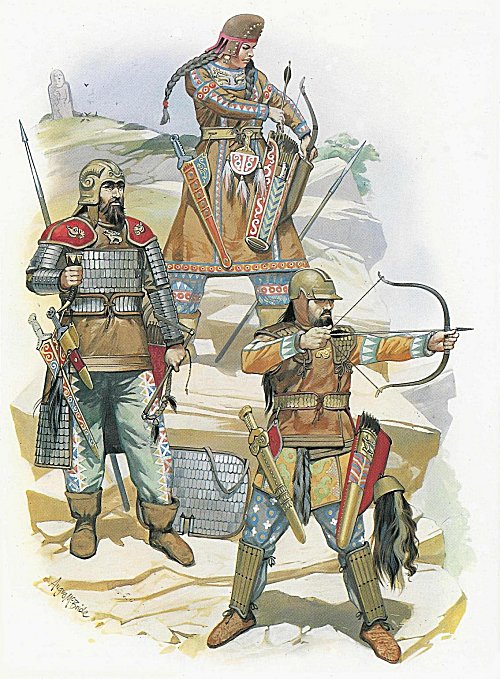Did The Amazons Really Exist?
The fierce female warriors – the Amazons – were strong and brave, but did they really exist?
History’s first mention of a race of warrior women is found in Homer’s ILIAD, an account of the Trojan War, probably written in the 8th or 7th century B.C.. Homer’s Amazons, a race of fierce women who mated with vanquished male foes and kept only the female children they bore, were believed to occupy the area around the Black Sea. Amazon women also crop up in Greek myths. One of the labors of Hercules, for example, required him to acquire the girdle of the Amazon queen, Hippolyte. The Amazons of Greek mythology most likely had no connection to the women of the steppes, says archaeologist Jeannine Davis-Kimball. “I think the idea of the ‘Amazon’ was created by the Greeks for their own purposes,” she says.

A battle between Amazons and Greek warriors is depicted in a marble sarcophagus on display at the Pio Clementino museum in the Vatican. (Colin/Wikimedia Commons)
A history of sorts:
The works of the Greek historian Herodotus, written around the 5th century B.C., describe a group of female warriors who lost to the Greeks at the battle of Thermodon. Herodotus' Amazons were taken prisoner and put on ships, but overwhelmed and killed the Greek crew. Unable to sail themselves, the women drifted to the shores of the Black Sea, to the territory of the Scythians, a nomadic culture of Iranian descent. The women, Herodotus says, intermarried with the Scythian men, and convinced their new husbands to move northeast across the flat grassy plains, high mountains, and searing deserts of the Russian steppes, where the group eventually evolved into the Sauromatian culture.

Amazons in Eurasia:
The first direct evidence for warrior women of high status on the steppes of southern Russia comes from excavations of burial sites of the Sauromatian culture dating from the 6th to the 4th century B.C. Judging from their grave goods, Sauromatians were nomadic, experts in animal husbandry, and skilled in warfare.

In some archaeological digs in Eurasia, as many as thirty-seven per cent of the graves contain the bones and weapons of horsewomen who fought alongside men. Credit Photograph by Erich Lessing / Art Resource.
Starting around the 4th century B.C., Sauromatian culture evolves into the Sarmatian culture, also a nomadic people that make their livelihood raising animals and versed in the art of war. The culture, which had been expanding its territory, soon shifts its focus. “They become raiders and traders, with forays to the west to interface with the Romans, and they relocate to cities and to areas along large trade routes,” Davis-Kimball says. “Their wealth increases. We see that in their burial items. We see strong, powerful women, but their role changes. We find burials of women that still retain cultic artifacts, indicating that they were a priestess of some sort, but there is much more gold and more secular ornamentation — more golden cups, more golden jewelry, elaborate things — and less weaponry. This type of evolution is a normal manifestation of culture.”
From the 2nd century B.C. to the 2nd to 3rd century A.D., the Sarmatians migrate to the west and north of the Black Sea, and eventually invade Dacia (now Romania). In the 3rd century A.D. the Sarmatians are invaded by the Goths, and in 370 A.D. they are overtaken by Huns and either killed or assimilated. Jeannine Davis-Kimball believes that remnants of the integrated Sarmatian population can still be found in the descendants of that conquering horde of Mongols. The Mongols relocated from southern Russia to western China and western Mongolia 150 to 200 years.
0 comments:
Post a Comment